Grilled Fire Chicken With Cheese: Korean Spice Meets Temperature Perfection
If you were coming to my place for a football viewing party and I told you that I was making spicy chicken that is slaked in flavorful, finger-licking sauce, you’d probably expect a big platter of wings…maybe even grilled wings. But if you thought that, you’d be wrong. Because the spicy, finger-licking, beard-staining chicken I’m making this year is Korean Fire Chicken with Cheese.
Called buldak in its homeland, this dish has everything you could want for a Big Game party. It’s grilled, spicy, drenched in cheese, and its flavor profile is turned all the way up to 11. You can pile it in a tortilla or a pita or make positively awesome nachos out of it, or you can just stack a heap of it on your plate and eat it with your fingers. It is perfect football food.
In this post, we’ll cover what this dish is, the critical temperatures you need to follow to make sure you cook it safely and correctly, and give you a phenomenal recipe for buldak fire chicken from SeriousEats.com’s Sasha Marx. Get hungry and keep reading.
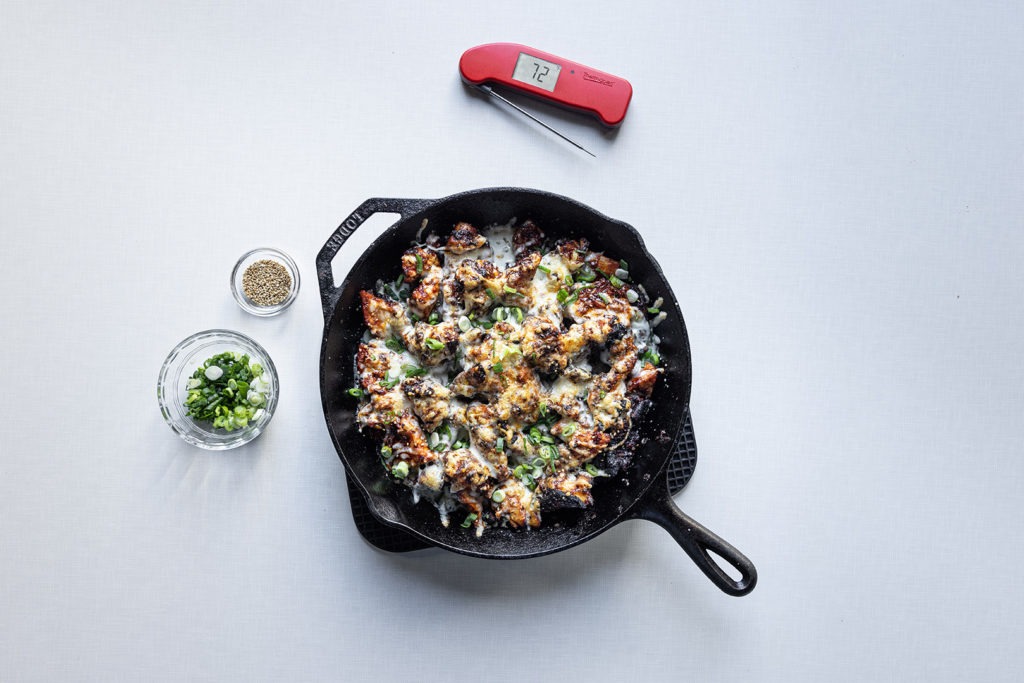
What is buldak?
Buldak is a dish of cubed chicken that is marinated and cooked in a savory/spicy/somewhat-sweet sauce made of Korean fermented chili paste (gochujang), ground dried chilies, garlic, ginger, and soy sauce. The chicken can be broiled, grilled, or even stir-fried. Some versions, such as the one we’re making here today, are also covered in a blanket of melted, broiled bubbly cheese. This may seem odd for an Asian dish, but Korean food has long had an affinity for melty cheese. And it works.
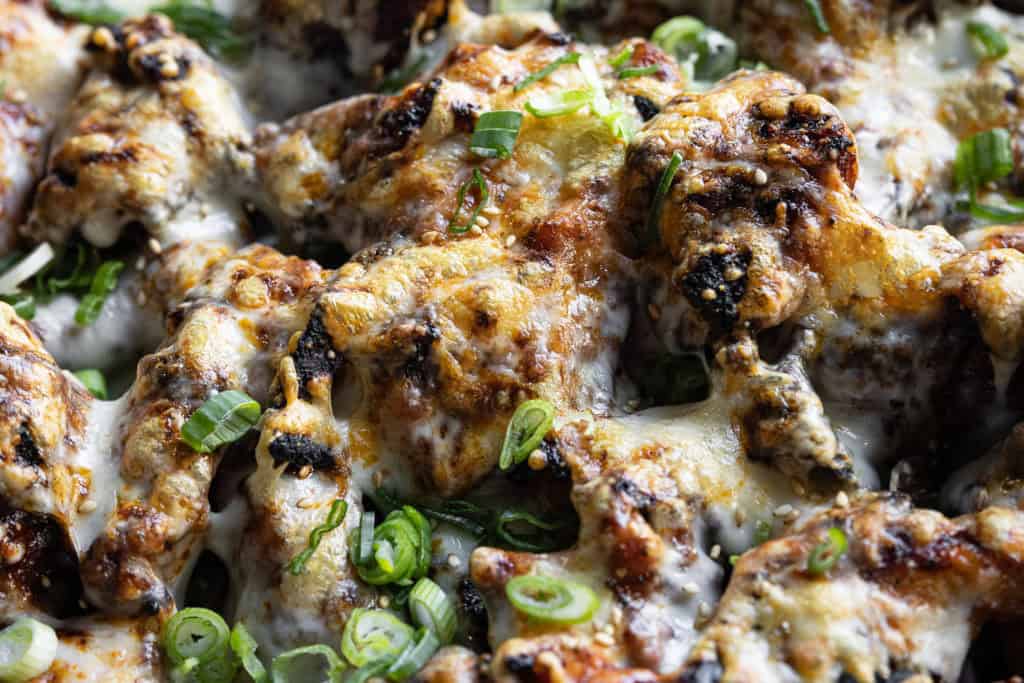
Buldak—which literally means “fire chicken”—doesn’t get its name from being grilled (as I said, some versions are even stir-fried), but from the copious use of chili in the dish, which can be quite extreme. In this recipe, we have the heat set at a nice “mmmm…my mouth feels warm and happy” level that you could serve to guests without much trepidation, but you can certainly make it as hot as you like! Just add more minced fresh chilies to the sauce as you cook it. The powdered and fermented chili will add a nice baseline warming buzz, but the fresh chilies give it a sharp, angry spice that you might be searching for.
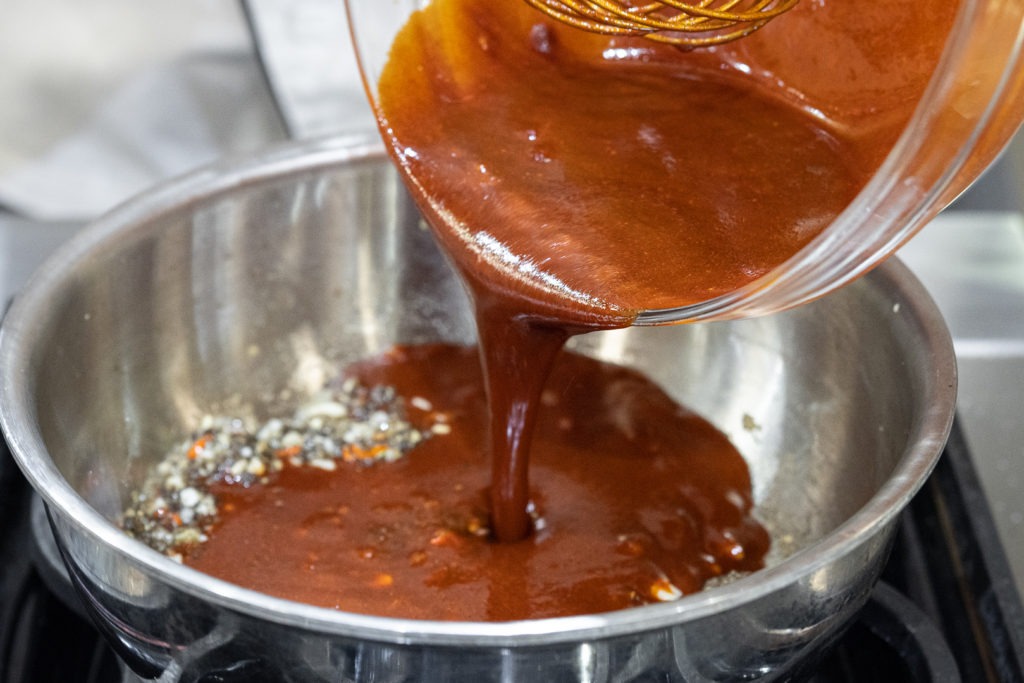
How to cook fire chicken
To begin, we’re going to start with bone-in, skin-on chicken thigh. We’ll cut the bones out by hand, and we’ll actually marinate and grill them with the chicken so that people can gnaw on the left-on bits of grilled chicken meat. The skin will char beautifully, giving us deeper flavor. If you want to start with boneless-skinless thighs that’s fine, too! But the skin adds something nice and the bones are fun.
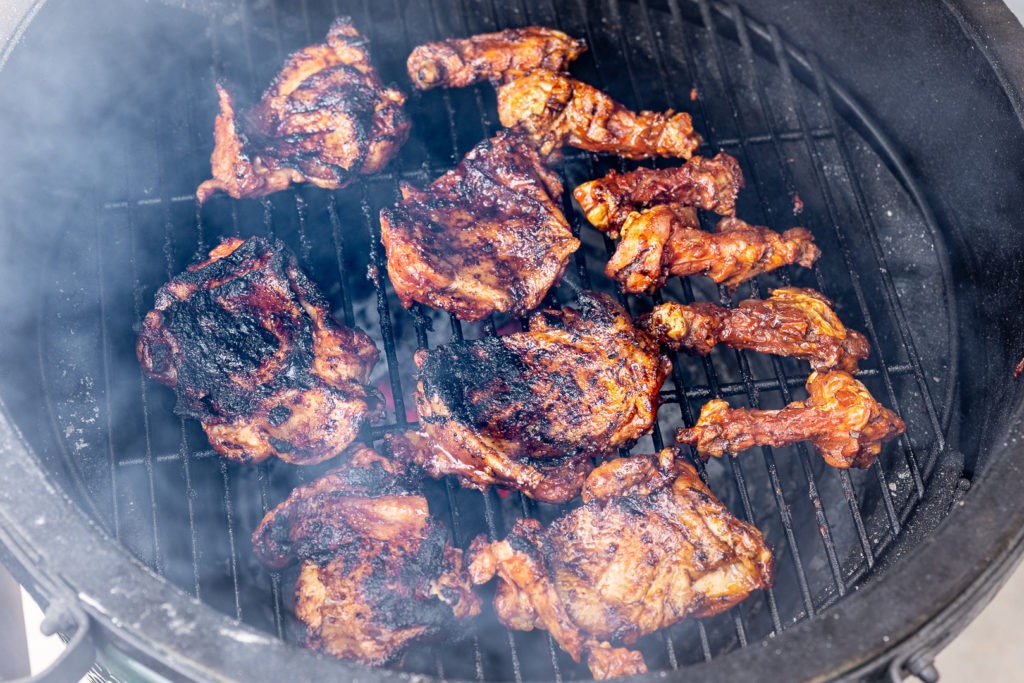
Why chicken thighs? For the best results in all but very specific chicken dishes, you should always use chicken thigh instead of chicken breast. Breast meat overcooks easily, drying out if it overcooks by only a couple of degrees. In fact, anything over about 155°F (68°C) gets dry fast. The dark meat of the thighs, though, can withstand a wider range of temperatures without complaining.
Thigh meat isn’t even very appetizing until it gets up to 175°F (79°C).
Critical temps for grilled chicken
To get maximum tastiness and excellent texture for this fire chicken, we use thigh meat and char-grilled it to about 165°F (74°C), then cut it into smaller—large bite-size—pieces and finish them to 175°F (79°C), applying more of the marinade as a glaze while they cook. The result is deeply flavored as well as tender and juicy—in fact, it ends up with the texture that people hope to get from chicken breast, but which they often miss.
Measuring the temps in those small pieces of chicken cooking over hot coals is a perfect job for Thermapen® ONE. Its sensor tip is small enough to take the temperature in even the smallest cuts of meat, and the one-second full readings get you away from the heat fast enough to avoid cooking your hand. After all, we want fire chicken, not fire grill cook.
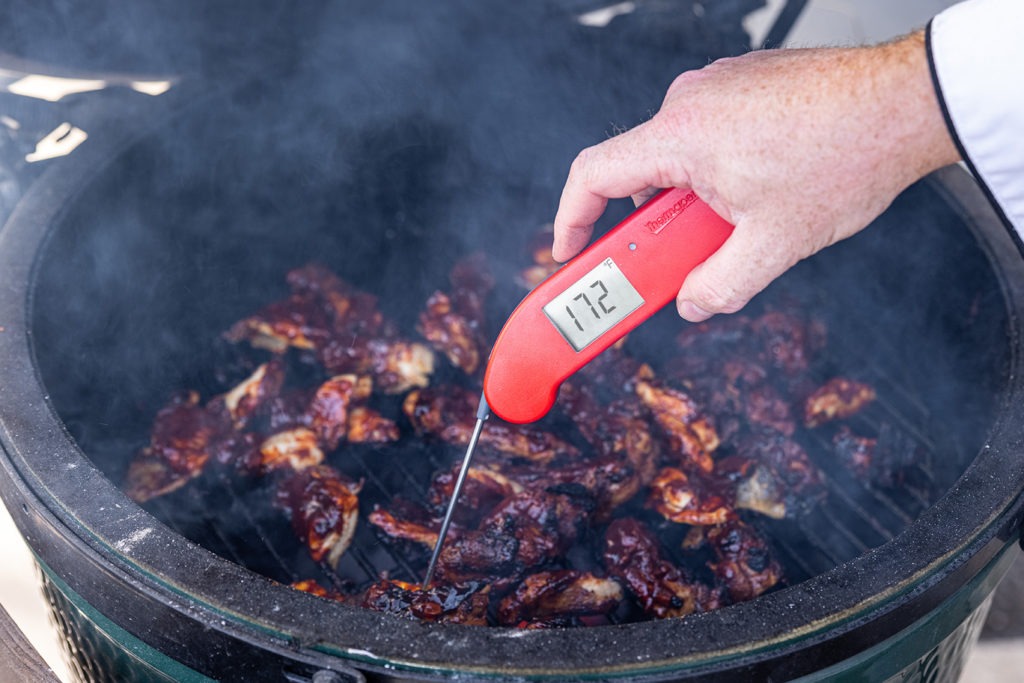
Bubbly, brown cheese on buldak
Once the chicken is properly cooked through, we toss the saucy, grill-y chicken in a cast iron pan, smother it in a layer of low-moisture mozzarella, and pop it under the broiler for a few minutes until the cheese is melted and brown and bubbly and even a little crispy in places.
Finally, we sprinkle the whole thing with sesame seeds and fresh chopped scallions. Wow and yum!
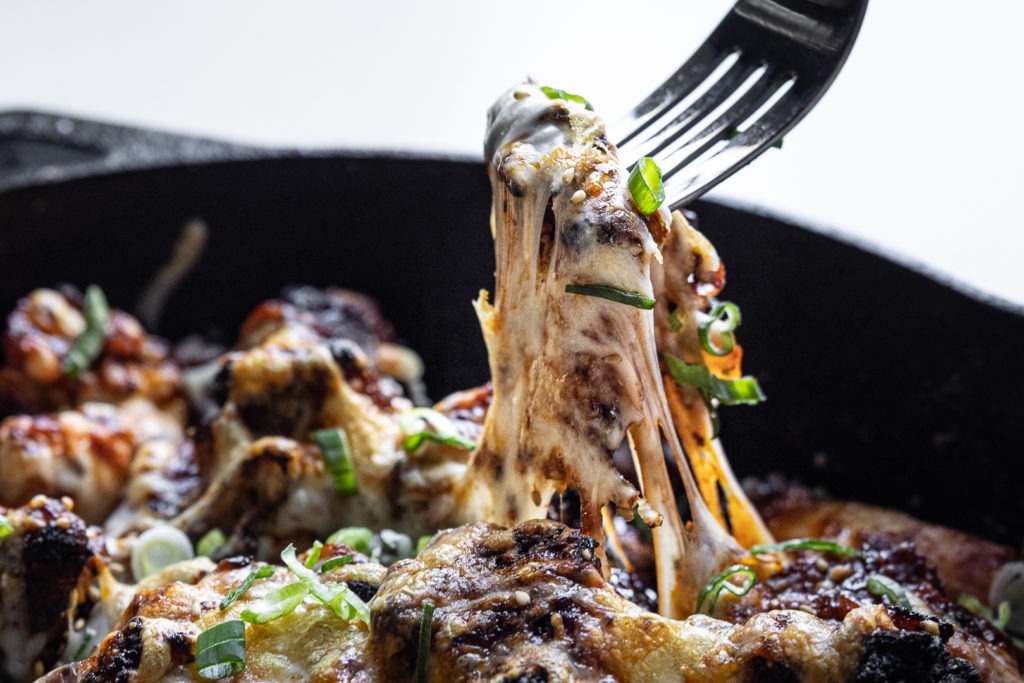
Korean fire chicken 100% belongs at your home-gating party. The smell alone will score you extra points, and once people dig in to it, they aren’t going to stop. When they taste it and see how tender and juicy it is, you can bet they’ll ask if it’s chicken breast. You can smile and tell them “no, it’s actually properly cooked chicken thigh” then share the thermal secrets and the recipe. No matter which team wins the game, you’ll have won the party.
Print
Grilled Korean Fire Chicken With Cheese (Buldak With Cheese)
Description
Cheesy, melty Korean fire chicken, adapted from a recipe found at SeriousEats.com
This recipe calls for at least 45 minutes of marinating but is even better if marinated overnight. Plan accordingly!
Ingredients
For the sauce:
- 1/2 C chicken stock
- 1/2 C soy sauce
- 1/4 C corn syrup or honey
- 1/4 C gochujang (Korean chili paste)
- 1/4 C fine ground gochugaru (Korean chili powder), or other medium-spicy ground chili
- 2 Tbsp toasted sesame oil
- 2 Tbsp vegetable oil
- 8 large garlic cloves, minced
- One (1-inch) piece of fresh ginger, finely grated—about 1 Tbsp
- 2 fresh red Asian chili peppers, minced. If you want hotter fire chicken, add more of these.
- 1 1/2 Tbsp freshly ground black pepper
- 1 C Sprite or other lemon-lime soda
For the Chicken:
-
6 bone-in, skin-on chicken thighs (about 2 lb) (boneless, skinless can be used)
To Serve:
- 6 oz low-moisture mozzarella, shredded
- 3 scallions, thinly sliced
- 1 Tbsp toasted sesame seeds
Instructions
Prepare the marinade/sauce and marinate the chicken
- Whisk the gochujang, chili powder, sesame oil, chicken stock, corn syrup/honey, and soy sauce together in a bowl.
- In a medium saucepan, heat the vegetable oil over medium heat. Sauté the garlic and ginger in the hot oil until very fragrant, about half a minute.
- Add the minced chilies and black pepper. Sautee another half minute until those ingredients also become fragrant. (You might want to run a vent for this part—the air can get a little spicy.)
- Add the gochujang mixture as well as the Sprite. Stir to combine and to scrape up any cooked-on bits from the bottom of the pan.
- Bring the mixture to a boil, reduce the heat to a simmer, and cook to reduce by about half. You should end up with a sauce that can easily coat the back of a spoon, and that should be about 1 1/2 cups of liquid.
- Meanwhile, debone the thighs by making an incision along the bone, then sliding the knife under the bone. Cut the ends of the bones free from the meat. Don’t worry about getting the bones super clean and meat-free, they will be grilled up, too.
- Once the sauce is reduced, cool it to room temp.
- Place the chicken and bones in a gallon zip-top bag. Pour half of the sauce, about 3/4 C, into the bag with the chicken.
- Mix the sauce and chicken until everything is well coated.
- Marinate the chicken in the refrigerator for at least 45 minutes or up to overnight. Cover the remaining sauce and refrigerate, as well.
Grill and finish the chicken
- When ready to cook, light one chimney full of charcoal. When it is well lit, pour it into your grill, heaping it somewhat so that one half of the grill is hotter than the other half.
- Preheat the broiler in your oven.
- Place the chicken, skin side down, on the hotter half of the grill. Place the bones on the cooler side of the grill.
- Cook until well charred on the first side. Flip over and continue to cook until the chicken reaches an internal temperature of 165°F (74°C). Check the temps frequently with your Thermapen ONE.
- Also, be turning the bones every so often to give them nice char and to cook them fully.
- Once the chicken reaches 165°F (74°C), use kitchen shears to cut each thigh into pieces that are too big to fall through your grill grate but small enough to eat comfortably in one bite. Cut them right back onto the grill.
- Use a silicone brush to baste the chicken and bones with the remaining sauce.
- Cook a couple more minutes, checking temps with your Thermapen ONE. When the pieces reach 175°F (79°C), remove them to a cast iron pan. Put the bones in the pan, too. If there is any sauce left in the container, pour it over the chicken now.
- Sprinkle the cheese over the top of the chicken evenly and broil it for about 3–5 minutes, until the cheese is bubbly and browned. Keep a close eye on it while broiling!
- Top with sesame seeds and scallions.
- Serve! People can use forks, but I enjoyed just going at this with my fingers.


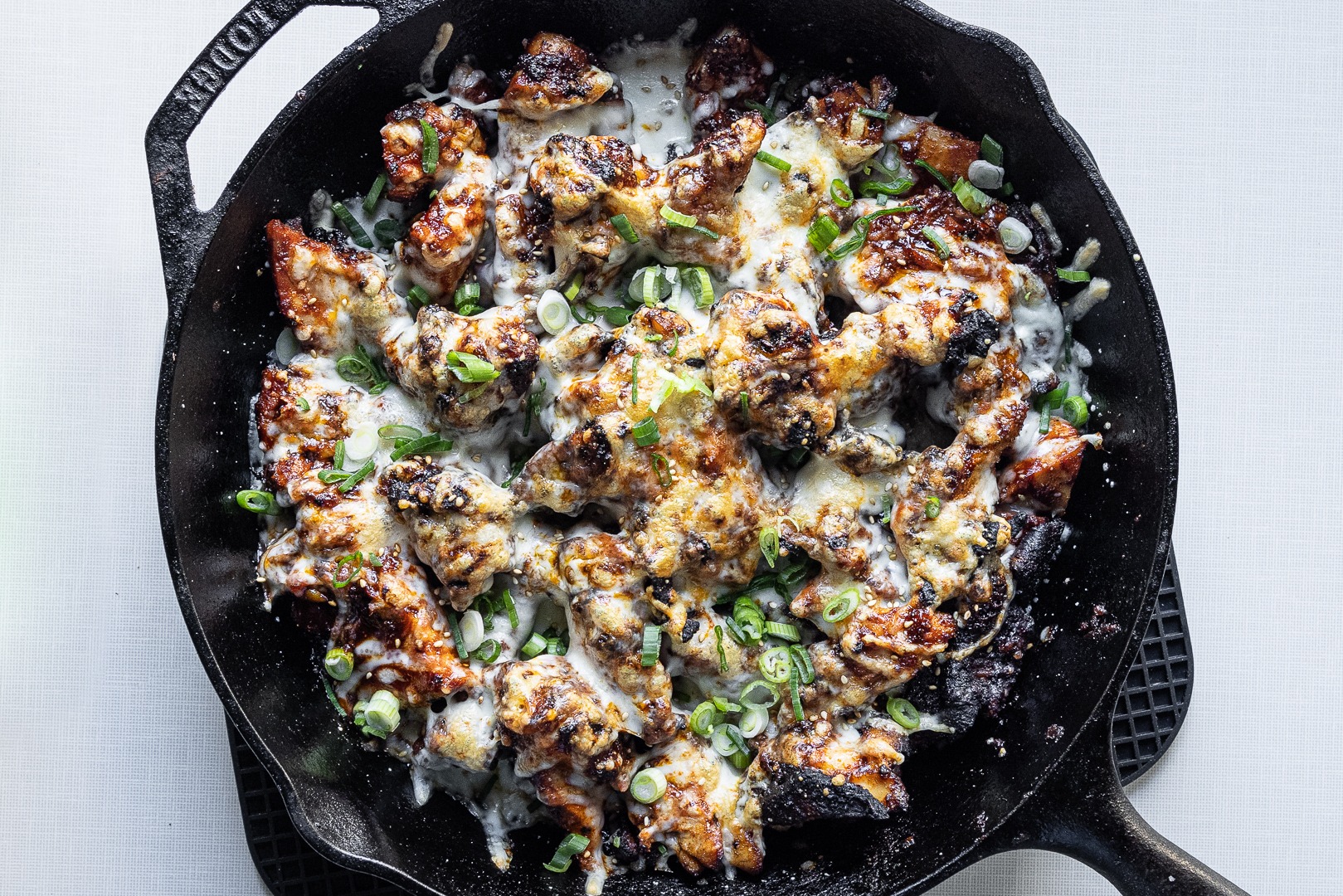
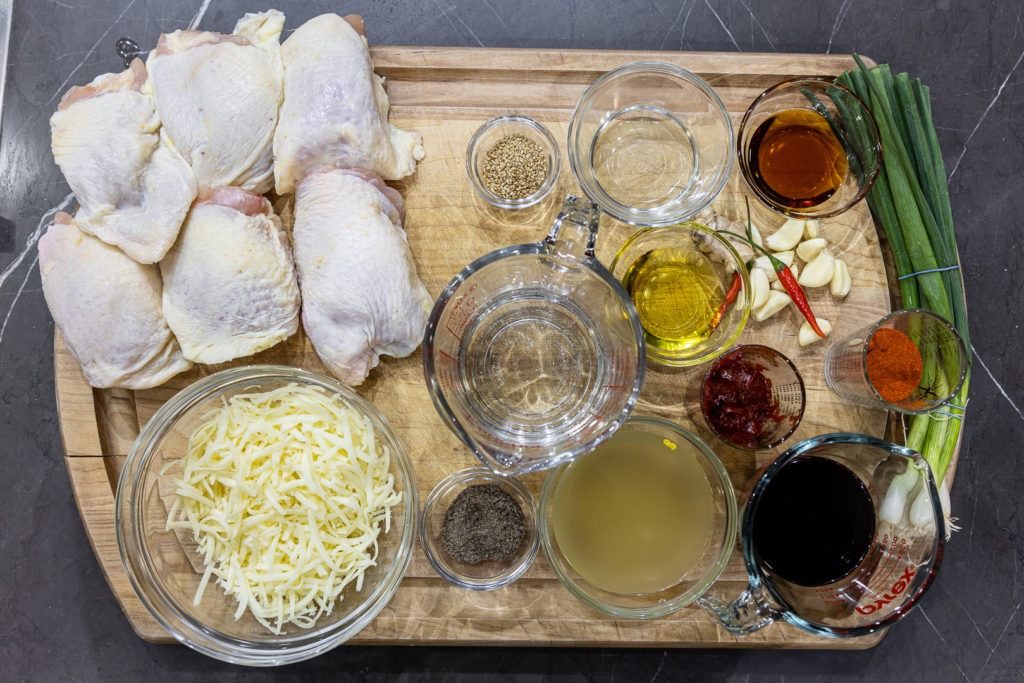
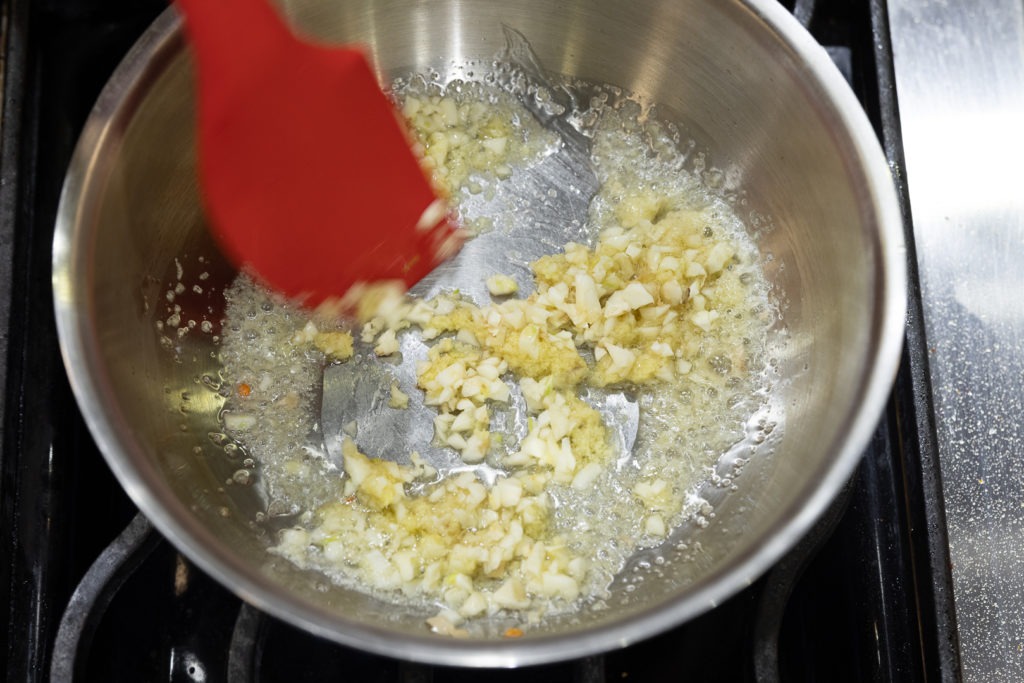
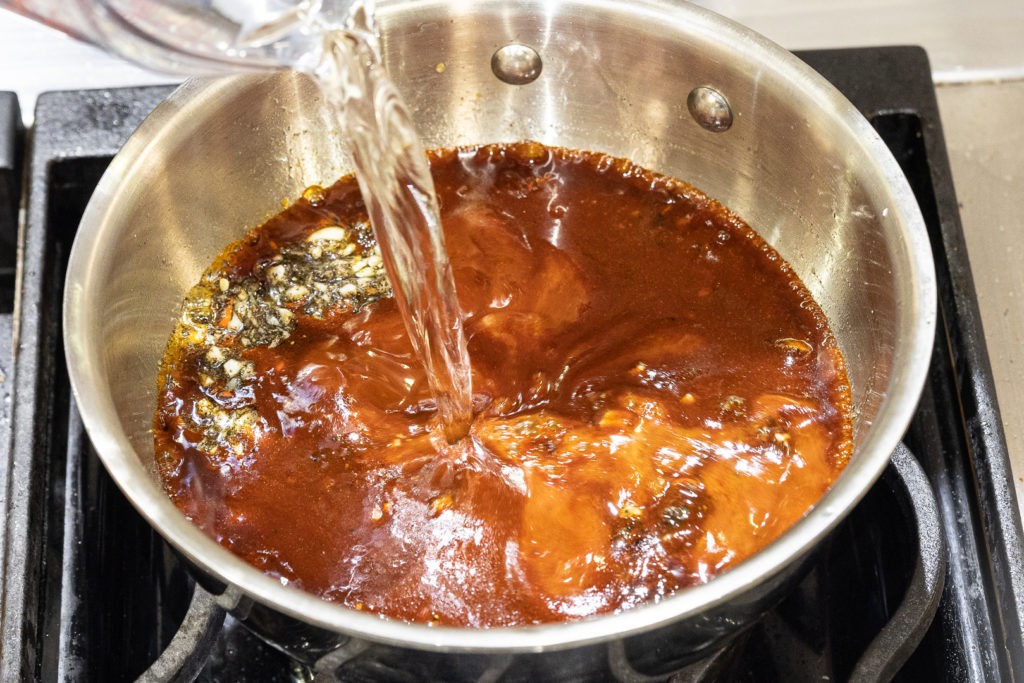
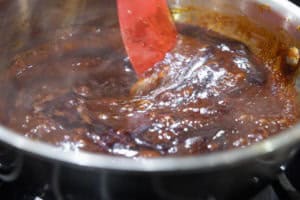
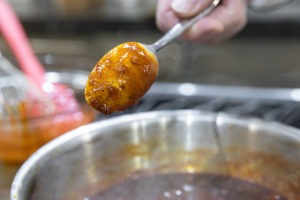
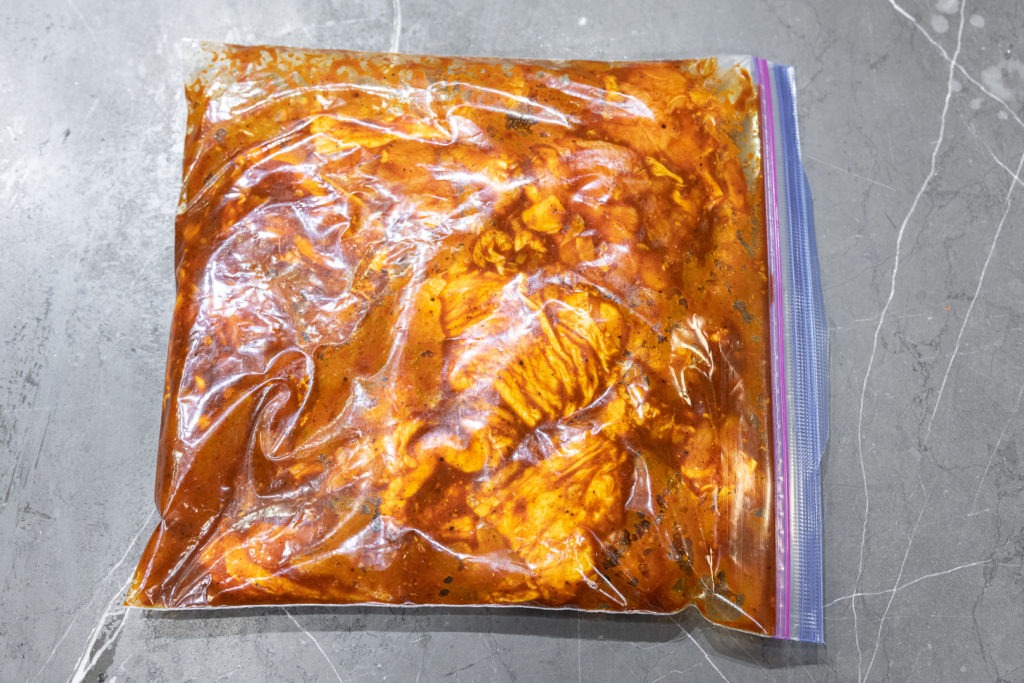
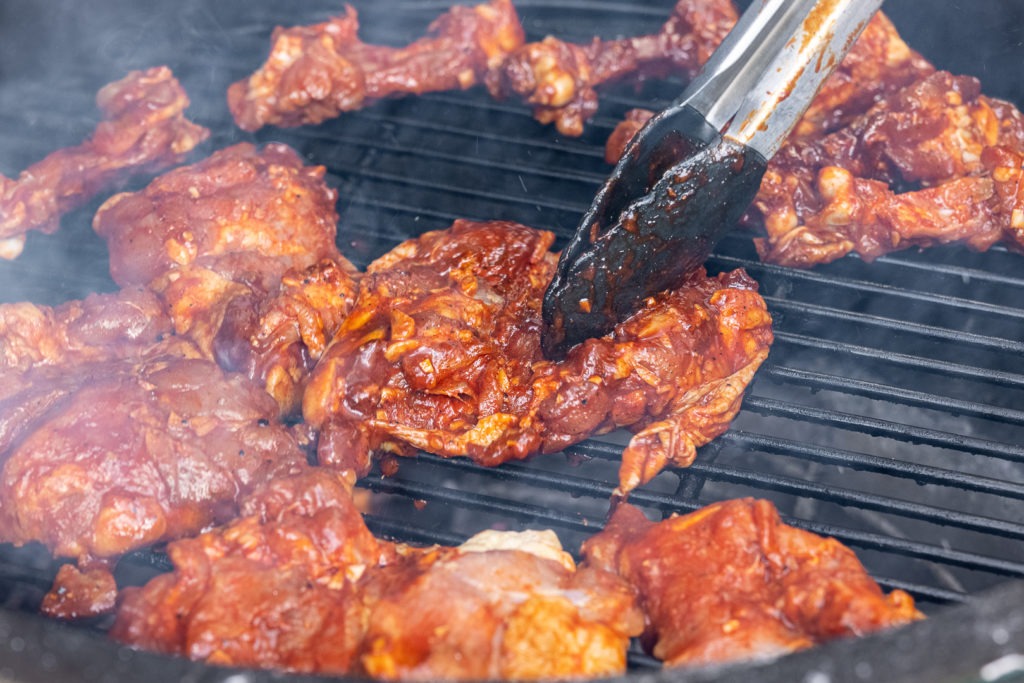
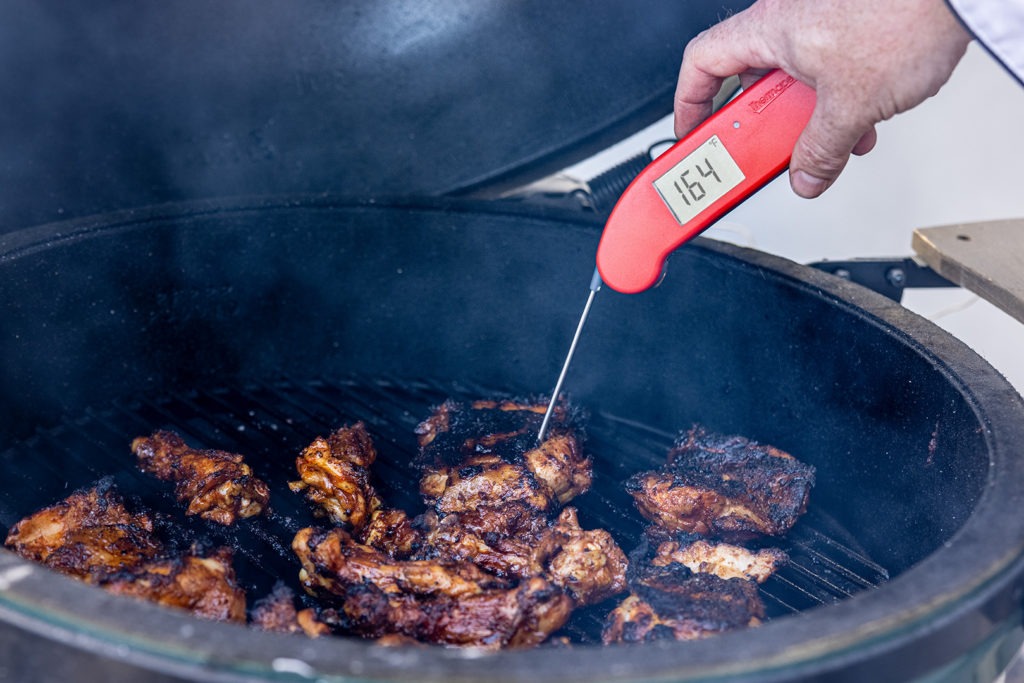
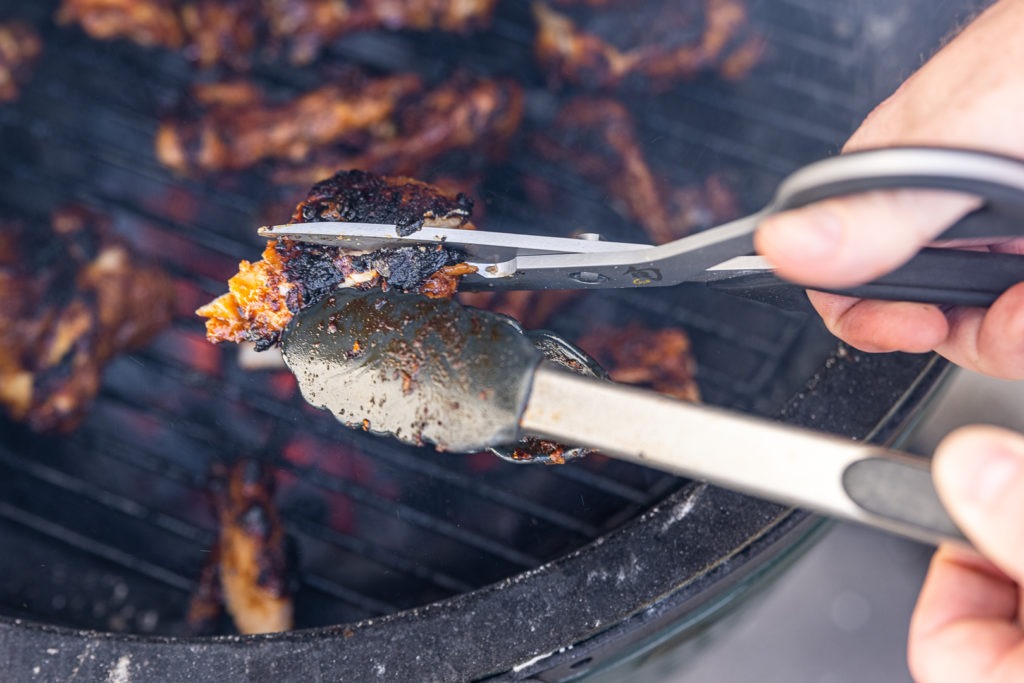
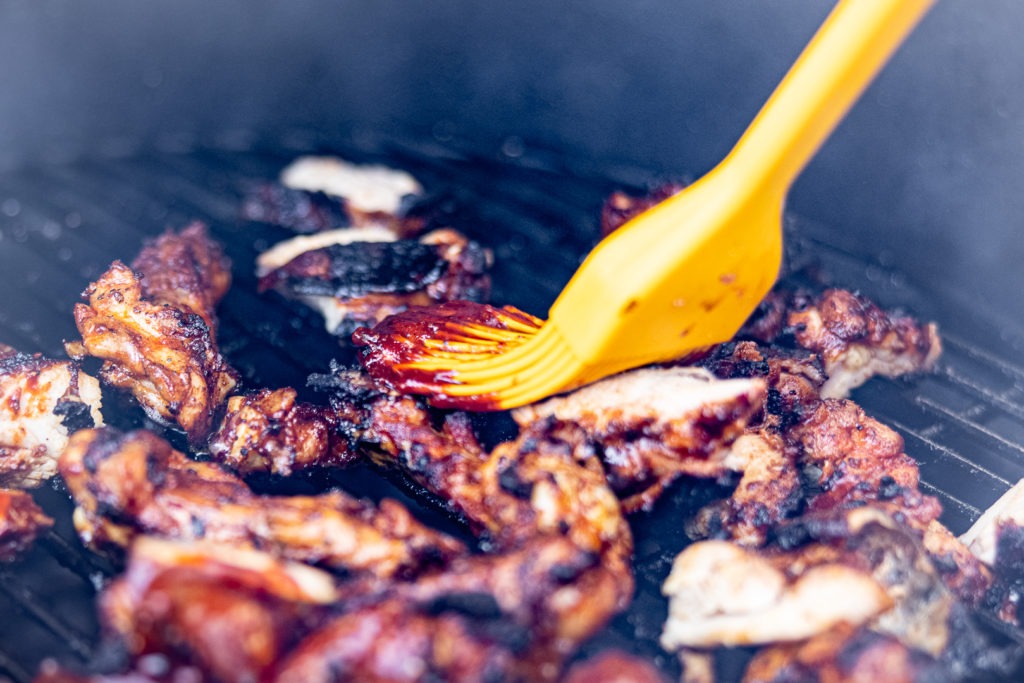
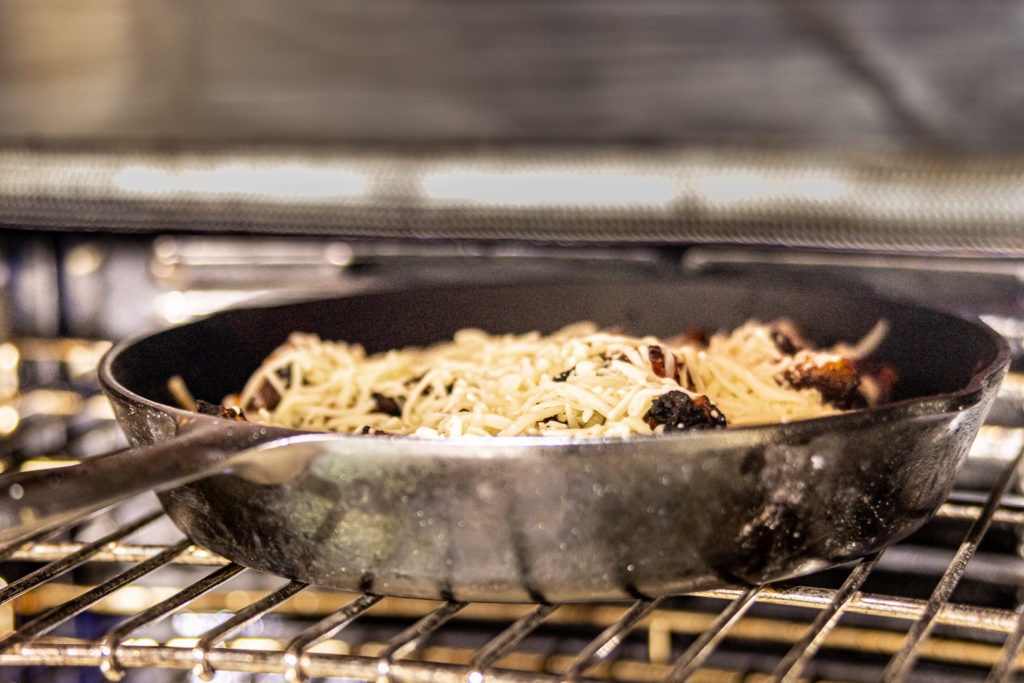

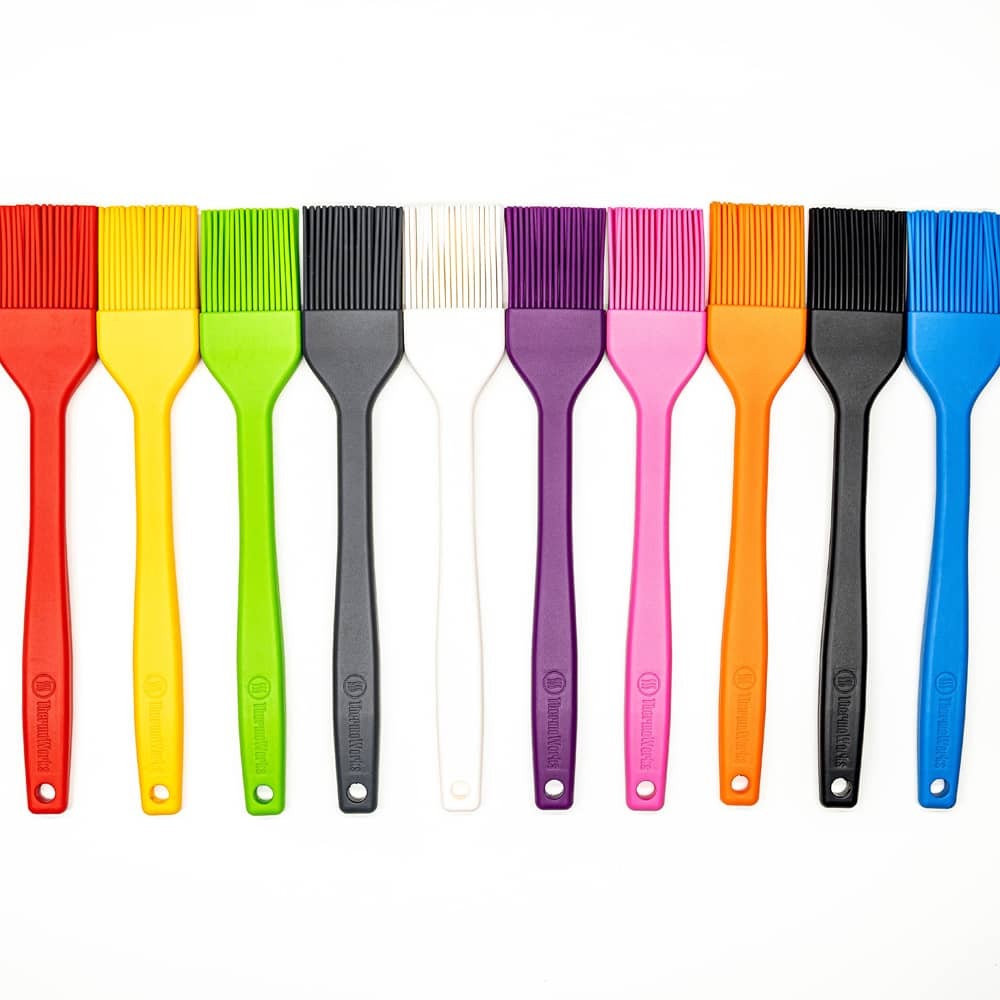
Why can’t you just buy boneless thighs? What if you live in an apartment and cannot grill
outside?
Fran,
You can certainly use boneless thighs, but the grilled bones do add a fun nibbling/gnawing experience. I also like the way the skin cooks up, and it’s harder to find skin-on boneless thighs. But! It’s better to make it with boneless/skinless thighs than to not make it at all, so go for it!
If you can’t grill outside, you can put the chicken on a fack and put it under your broiler to char. Treat your broiler like a grill, turn the chicken and keep an eye on it. The original recipe that I link to, on SeriousEats, gives good instructions for cooking it indoors.
Put bones back in????
Is this a typo?
Joe,
Not a typo! Grilling the marinated, still-meaty bones that you cut out of the thighs makes for a fun snacking experience. You can certainly just toss the bones if you don’t want to grill them, but it’s fun.
Thanks for posting this recipe. I am anxious to try it.
I’m guessing that the mozzarella won’t stay very gooey for long, once served onto a plate. Can you suggest what adjustment I can make to keep the cheese topping soft for a little longer than it might when just using mozzarella?
You are right that the mozz won’t stay super gooey for long. White American Cheese will stay gooey longer, but might not brown as well. Perhaps a mix of the two shredded together?
The recipe lists corn syrup (or honey) as an ingredient but I didn’t see it referenced in the recipe instructions. Did I just miss it?
I missed it. I have corrected the error.
This looks delicious. Any suggestions for alternatives to Asian peppers if I cannot find any? Also, thank you for having options to print and pin recipes. It makes it much easer to sort and find the ones I want rather than trying to find them in my email!
Serranos will do well!
Anyone made this on a pellet grill? Just wondering what temp to cook them at? Mine are marinating now for tomorrow.
I just made this for our Super Bowl dinner. My wife is Chinese and we have a few kinds of soy sauce from our local pan-Asian market. I used 1/2 c of Koon Chun Thin Soy Sauce per the recipe. Although we liked it, we found the recipe to be incredibly salty, and since the only salt is in the soy sauce—plus what might be included in the Gochuchang—I’m going to mark up the recipe to cut the soy sauce in half. I’m wondering if the recipe wasn’t built on the type of soy sauce generally available in grocery stores catering to Caucasians rather than Asians. Anyone else have any suggestions on how to keep the salty content to a reasonable level. Just for clarification, I love salt and make no effort to avoid it, but this was just too much.
I used plain old Kikkoman and found it tasty, but cutting the soy down a bit is certainly a good option.